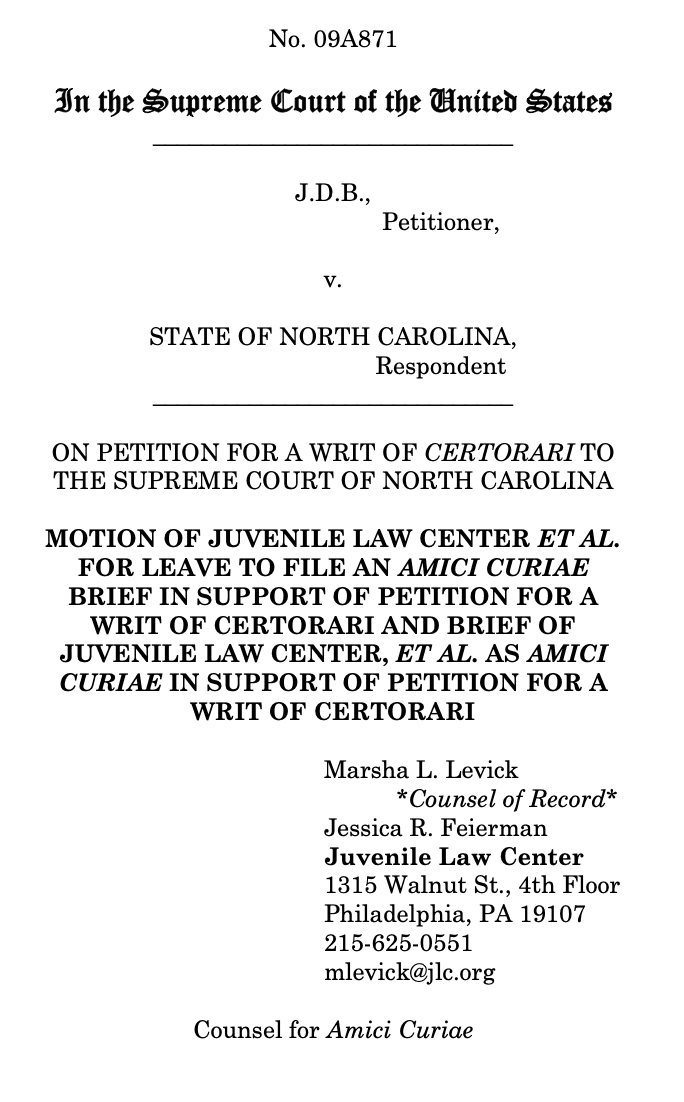
Summary of Argument
This case involves two issues of extraordinary importance to the lives of vulnerable youth – first, how the school setting affects custody determinations for purposes of Miranda warnings, and second, to what extent age factors into such determinations. This case calls upon the Court to determine whether J.D.B., a 13-year-old, would feel reasonably free to terminate an interrogation and leave the room when he was pulled out of his middle school classroom by a uniformed police officer and escorted to a school conference room where he was then questioned by a police officer and school officials about an off-grounds incident. If he would not feel free to leave, police would be required to issue Miranda warnings. This Court has recognized that the school atmosphere is inherently coercive, making students more vulnerable to pressures, and ultimately in need of unique constitutional protections. See Lee v. Weisman, 505 U.S. 577, 593 (1992) (finding that school children are uniquely susceptible to the pressures of prayer delivered during school events); Hazelwood Sch. Dist. v. Kuhlmeier, 484 U.S. 260, 266-67 (1988) (employing a distinct First Amendment analysis for speech in the school setting). This case presents an opportunity for the Court to clarify how the distinctive pressures of the school environment factor into Fifth Amendment custody determinations.
Historically, this Court has also recognized that the “status of minors under the law is unique.” Bellotti v. Baird, 443 U.S. 622, 633 (1979). The North Carolina court’s conclusion that age does not matter for Fifth Amendment custody determinations contradicts this Court's precedents, statutes and case law from numerous states, and developmental scholarship regarding adolescent perceptions and decision-making. In Yarborough v. Alvarado, 541 U.S. 652 (2004) this Court considered whether the age of a suspect just shy of his 18th birthday mattered for establishing custody. Because Yarborough required the Court to apply a deferential habeas standard, the Court never reached the merits of Alvarado’s case. Id. at 665. J.D.B. v. North Carolina presents an opportunity for the Court to clarify unsettled law in the first instance and provide necessary guidance to state courts and law enforcement. Petitioners have presented thorough information to this Court on the split among state and federal circuit courts as to whether age should be considered in the custody analysis. Amici write separately here to underscore the importance of the issue to vulnerable youth. Amici therefore respectfully request this Court’s clarification that the school setting, combined with the student’s age, should factor into custody determinations under the Fifth Amendment.
Open Amicus Brief as PDF